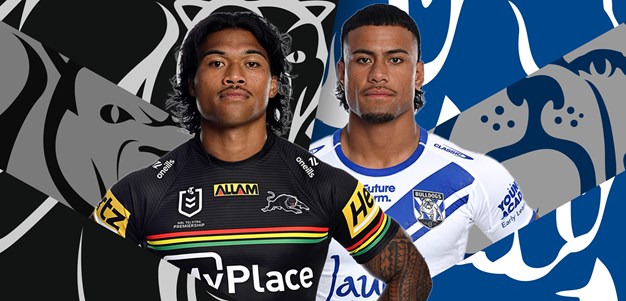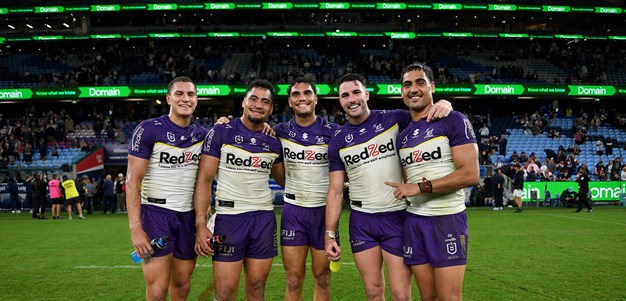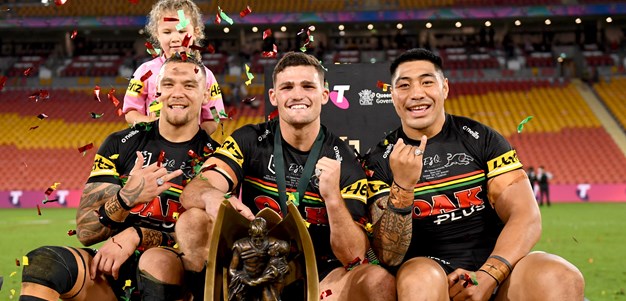State of Origin is a game of moments, and the Maroons' victory in Game One was in large part down to the fact they intentionally made moves to make those moments happen in their favour.
Queensland put their foot down to build an early lead by largely ignoring the traditional feeling-out period and moving the ball.
After a tempered start in which they looked to wait for the moments to happen, the Blues managed to fight their way back in front and looked to be patient in attack while playing with an extra man late in the game. But Billy Slater’s side, with limited opportunities, again created what ended up as the match-winning moments.
It all started with how Queensland worked their way up the field in yardage.
Even within the customary early-game grind that predominantly consists of one-out runs and a game of who-will-blink-first, the Maroons played the ball wide to the edges. They used two distinct strengths in their yardage sequences to move up the field and stretch the Blues defence across it.
Note two key New South Wales players in the video below, numbers eight and nine.
Queensland ball movement set
Tevita Pangai Jr (8) is first involved in the Hamiso Tabuai-Fidow tackle on Queensland’s far left tram line to start the set. He is again involved two tackles later alongside Api Koroisau (9), bringing Selwyn Cobbo to the ground at the far right tram line.
As Queensland shifts the ball back through the middle, Koroisau follows. Two tackles after making his first, the Blues hooker is wrapping his arms around David Fifita on the left tram line. Two Blues middle forwards have travelled across the field while being engaged in defence as the Maroons move up it, using Walsh’s speed outside the three-in defender to stress the defensive line and pick up extra metres.
On the return shift, Queensland played to the middle with a quick play-the-ball before running Fifita at a defensive line on their heels. Fifita, in particular, became a key part of the Maroons' yardage sets throughout the match as a momentum generator down the short side or the target on a long shift.
Queensland promoted fatigue in the defence by moving line across the field and constantly looking for opportunities to create. And after rolling one in for Tabuai-Fidow to score the first of the night, Munster soon created another.
Tabuai-Fidow opens the scoring
Having opened the scoring with the above try, Queensland find themselves with the ball on the second tackle following a penalty in a set after points. he safe option is to play to your spots inside 10 and look for a repeat set if the points don’t come.
Instead, as Tino Fa’asuamaleaui engages four defenders in the middle, Munster is barking orders. He’s putting Reuben Cotter outside him with Patrick Carrigan hanging off his hip on the inside. It’s only a slight gesture and perhaps not even necessary given how well-drilled Queensland was on the night, but once Munster sees Pangai Junior at the A defender spot and Tyson Frizell slow to peel out of the tackle, he points at the space between Koroisau and Hudson Young.
The pieces fall into place more points.
A perfect start for the Maroons
Munster makes a line for Koroisau and Cotter’s lead holds Young’s slide. Cherry-Evans does the same with Tom Gilbert on Jarome Luai, and just like that, Walsh is back on the outside in a three-v-two situation.
Walsh is playing out a career-best season from this point on the field for the Broncos and the Maroons made sure to put him in similar situations in Game One, regardless of the tackle count or state of the game. The Blues, on the other hand, weren’t able to provide their superstar backline with enough clean opportunities to pile up points.
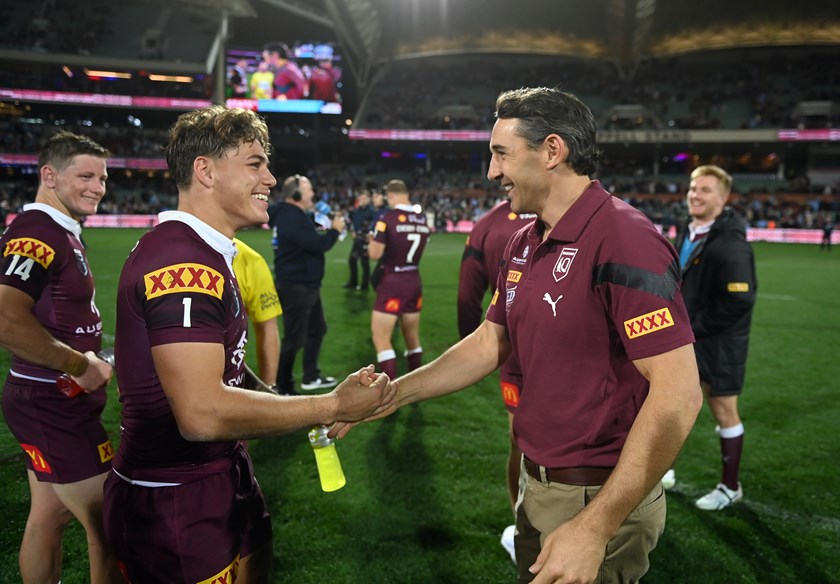
The reality is that New South Wales didn’t struggle in yardage. In fact, they ran for 282 more metres than Queensland as the back-five all clocked up over 100 metres each while Payne Haas, Isaah Yeo and Junior Paulo did the job through the middle.
They also found a lot of success down the short side, with Koroisau regularly identifying the middle forward flipped over to the short side A spot — sending his outside backs on a carry to generate ruck speed ahead of a long shift.
Getting up the field wasn’t a problem for Brad Fittler’s side, and the coach mentioned as much after the game that he thought his side created enough opportunities to attack the Maroons from favourable areas.
“It felt like we had enough opportunities to adapt and I was a bit disappointed,” Fittler said after the game. “We seemed to have a lot of good ball.”
He's right in that assessment.
Setting up from a tap-in good ball in the 22nd minute, we see in the video below how Haas wins the ruck before Jarome Luai takes possession down the left edge. With Cherry-Evans in front of his line as Cotter tracks inside, Luai makes the Queensland halfback his target with a lead runner outside him.
New South Wales attacking set #1
He plays out the back to Stephen Crichton this time but takes note of how the defence – in particular, Valentine Homes – reacted.
Ten minutes later and a near-identical shape turns into points.
Paulo provides the play-the-ball from the middle this time with Yeo and Cameron Murray holding defenders around the ruck. Koroisau’s tunnel ball splits Murray and Yeo to find Nathan Cleary who shovels it onto Luai. Again, Cherry-Evans is out in front and Cotter is tracking across on his inside. This time, however, Luai plays short as Holmes bounces out with Crichton in mind – finding Liam Martin for the try.
New South Wales attacking set #2
It’s a perfectly constructed try but the sort New South Wales failed to create again throughout the match despite getting in good positions to.
Where Queensland made their big moments happen – Cameron Munster picking Nicho Hynes out in the line on a 4th-tackle shift playing a man down ended up as the biggest – New South Wales waited. James Tedesco mentioned “wanting to be patient” with the ball in the post-match press conference... perhaps too much so?
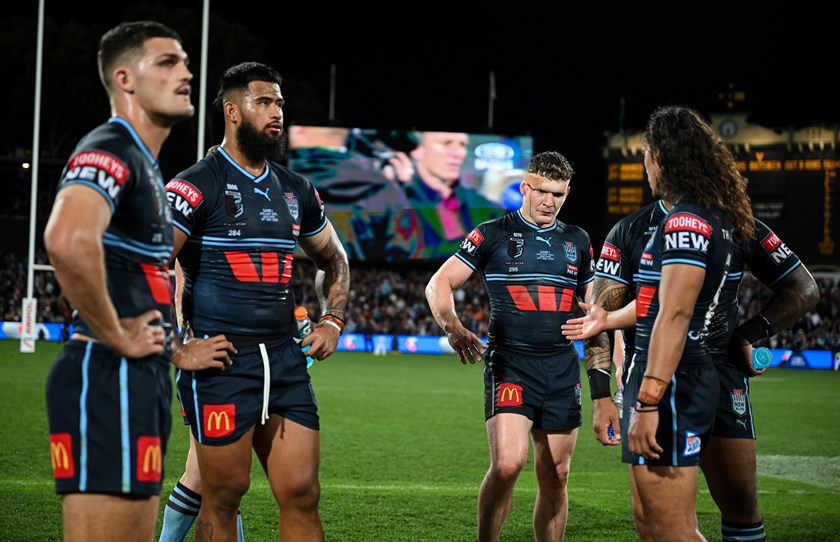
Penrith has won back-to-back premierships by bashing the door down through the middle, being patient in attack, and building pressure. It's clear that the style works.
But if there is one team in the world that can withstand the barrage through the middle and hold their nerve through the full 80 minutes, it’s Queensland.
Fittler and the Blues staff will be forced to rethink their approach with the ball given the injuries to Cleary and Koroisau ahead of Game Two.
Regardless of who fills the #7 and #9 jerseys, the temptation to lean into a Panthers-heavy system won’t be so strong. Instead, they might have more success playing to the edges and using the likes of Latrell Mitchell, Tom Trbojevic, Josh Addo-Carr and Brian To’o earlier. They have destructive players out wide that don’t need to be putting the ball over the line to play a leading role in producing points.
Queensland has proven you don’t need to be reckless with the ball to put your best attacking players in threatening positions all the way up the field.
With the two teams evenly matched and the Maroons preparing to win the series at home, the backline has the potential to be a game-defining area for the Blues if they can find the right balance of composure and creativity for Game Two.
Match: Maroons v Blues
Game 2 -
home Team
Maroons
away Team
Blues
Venue: Suncorp Stadium, Brisbane

